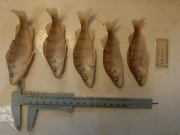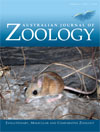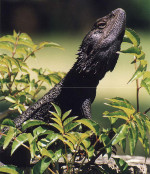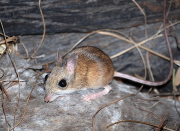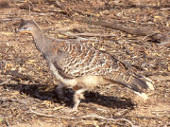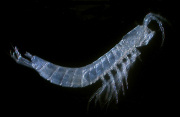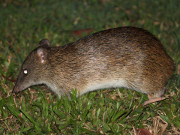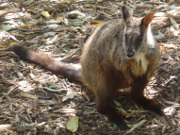Australian Journal of Zoology
Volume 64
Number 1 2016
The potential impacts of alien redfin perch on native biota were assessed. Unexpectedly, redfin perch were larger and shifted to piscivory at a much younger age (<6 months) compared to native populations. The findings are pertinent to the conservation of threatened small-bodied fish populations in the Murray–Darling Basin.
Photo by Scotte Wedderburn.
We report on the complex prey-handling of Indo-Pacific bottlenose dolphins (Tursiops aduncus) feeding on giant cuttlefish (Sepia apama) in temperate waters of south-western Australia. Feeding events occurred in shallow waters during July to September, predominately by adult females, where dolphins removed the cuttlefish head, ink and cuttlebone before consuming the mantle.
Photo by K. R. Sprogis.
Investigation of dietary shift in Pogona barbata revealed that typically juvenile dragons consumed larger, more active prey than adults. Adult females and small mature males tended to be sit-and-wait predators consuming small non-flying arthropods. Larger mature males, depended more on herbivory. Switches observed were consistent the Optimum Foraging Model.
Photo by John Spradbrow.
We present the first detailed ecological study of the elusive northern hopping-mouse. Camera trapping, pitfall trapping and radio-tracking were used to describe population ecology, habitat selection, burrow use and effective sampling methods. Our results may improve conservation outcomes for this increasingly rare species.
Photo by Rebecca Diete.
Using 454 pyrosequencing and genomic enrichment techniques we developed 12 polymorphic markers for the endangered megapode, the malleefowl (Leipoa ocellata) found in southern Australia. We developed 12 unlinked loci for genotyping. In a single population, the 12 markers were moderately polymorphic and showed moderate to high levels of heterozygosity.
Photo by Stephen Donnellan.
Investigation of alluvial groundwater systems of south-east Queensland revealed a diverse bathynellacean stygofauna with complex evolutionary relationships to related fauna elsewhere in Queensland, and on the wider Australian continent. The multifamily assemblage revealed here is likely to represent several new species, and at least one new genus within the Parabathynellidae.
Photo by John Little.
This research is a preliminary investigation into the bacterial community structure throughout the gastrointestinal tract and in faeces of the northern brown bandicoot, Isoodon macrourus. There was a high degree of 16S rRNA gene clones identified in this research. The majority of identifiable clones belonged to Clostridium and Ruminococcus.
Photo by Patricia O’Hara.
We aimed to determine how diverse and endemic the parasites of the genus Petrogale (rock-wallabies) are. A database of parasite identifications within Petrogale was established. Analyses of this database showed a correlation between the similarity of parasite communities and the phylogeny and biogeography of Petrogale, suggesting a high specificity of their parasites.
Photo by Elke Vermeulen.
